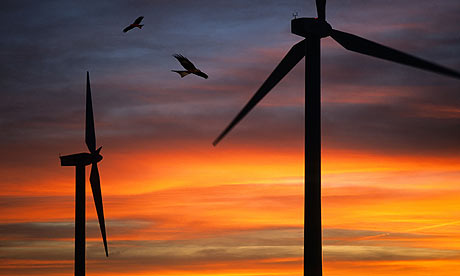Last week, several House lawmakers introduced a bill that would reform the Migratory Bird Treaty Act (MBTA). The ensuing debate sure to arise provides an excellent opportunity to lay some facts on the table about wind energy’s wholistic impact on birds.
Wind Energy Provides Benefits to migratory birds
The truth is wind is the most wildlife friendly way to generate large amounts of electricity. It’s a zero-emission energy source that avoids smog-creating air pollution, saves millions of gallons of water a year, and leaves 98 percent of land in the project’s footprint undisturbed.
Most importantly, wind is a leading climate change solution. For example, the book Drawdown is comprehensive examination of 100 different solutions to climate change, with input from more than 100 of the world’s foremost climate researchers. It finds that onshore wind power is the second most effective way to reduce emissions, and offshore wind ranks 22nd. Today, wind avoids 43 million cars’ worth of CO2 emissions every year, and that number is growing as wind’s record project development pipeline gets built and comes online.
That’s critically important because climate change remains the largest threat to many forms of wildlife, including birds. Just this past fall, the National Audubon Society found that two-thirds of North American birds are at risk of extinction due to climate change. On Audubon’s webpage announcing these findings, the organization lists five solutions to help prevent extinctions from coming to pass. It should be noted the second solution on the list is, ”Ask your elected officials to expand consumer-driven clean energy development that grows jobs in your community – like solar or wind power.”
Wind Energy’s Impacts are Too Low to Count
Despite some public narratives suggesting otherwise, in reality wind is responsible for less than 0.01 percent of all human-related bird deaths– one out of every 10,000 birds deaths caused by human activities occurs at a wind project. And that does not even include the largest threats to birds – feral cats and habitat degradation (caused by residential and commercial development and agricultural conversion).
Wind Energy is a Strong Conservation Partner
Despite the vanishingly small impacts to migratory birds, and the fact that wind energy is a critical part of curbing climate change’s impacts, the U.S. wind industry does more than any of power source to find ways to mitigate or completely eliminate its impacts. Many of the country’s leading wind companies have partnered with the conservation community to create the American Wind Wildlife Institute, which conducts research to find solutions to wind/wildlife challenges. The Wind Wildlife Research Fund is another avenue that is funding research aimed at lessening wind’s already small impacts to birds and other wildlife.
AWEA has a long history of working with agencies, conservation groups and other stakeholders to increase the production of emissions-free renewable energy while providing benefits to surrounding communities and ecosystems. AWEA supports migratory bird conservation, and our members will continue to coordinate with state and federal agencies and local stakeholders to address any potential impacts to all wildlife and habitat with responsible and practicable approaches.
No one can dispute the importance of birds for our ecosystem and the health of our planet. When it comes to wind energy, there are some basic facts:
- Wind energy provides benefits to birds through reduced greenhouse gases and air pollution, water conservation, and habitat preservation.
- All human activities result in impacts to migratory birds. In terms of overall impacts, wind energy’s impacts are vanishingly small.
- The U.S. wind industry has been a committed conservation partner, putting its money where its mouth is in supporting entities and programs committed to finding ways to further reduce impacts.
These facts are almost never a part of the public dialogue when it comes to wind energy and birds. An MBTA bill that establishes a permit program needs to consider these facts and ensure the new law will not result in added costs and regulatory uncertainties for an industry that is not a significant part of the “problem,” and is in fact a huge part of the solution.



